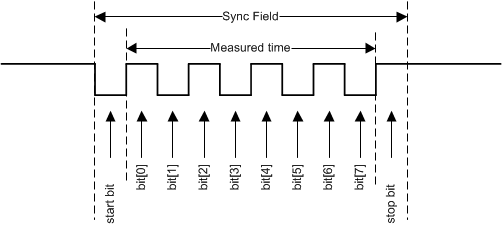SLASEC8C February 2017 – February 2023 PGA460-Q1
PRODUCTION DATA
- 1 Features
- 2 Applications
- 3 Description
- 4 Revision History
- 5 Pin Configuration and Functions
-
6 Specifications
- 6.1 Absolute Maximum Ratings
- 6.2 ESD Ratings
- 6.3 Recommended Operating Conditions
- 6.4 Thermal Information
- 6.5 Internal Supply Regulators Characteristics
- 6.6 Transducer Driver Characteristics
- 6.7 Transducer Receiver Characteristics
- 6.8 Analog to Digital Converter Characteristics
- 6.9 Digital Signal Processing Characteristics
- 6.10 Temperature Sensor Characteristics
- 6.11 High-Voltage I/O Characteristics
- 6.12 Digital I/O Characteristics
- 6.13 EEPROM Characteristics
- 6.14 Timing Requirements
- 6.15 Switching Characteristics
- 6.16 Typical Characteristics
-
7 Detailed Description
- 7.1 Overview
- 7.2 Functional Block Diagram
- 7.3
Feature Description
- 7.3.1 Power-Supply Block
- 7.3.2 Burst Generation
- 7.3.3 Analog Front-End
- 7.3.4 Digital Signal Processing
- 7.3.5 System Diagnostics
- 7.3.6
Interface Description
- 7.3.6.1 Time-Command Interface
- 7.3.6.2
USART Interface
- 7.3.6.2.1 USART Asynchronous Mode
- 7.3.6.2.2 One-Wire UART Interface
- 7.3.6.2.3 Ultrasonic Object Detection Through UART Operations
- 7.3.6.3 In-System IO-Pin Interface Selection
- 7.3.7 Echo Data Dump
- 7.3.8 Low-Power Mode
- 7.3.9 Transducer Time and Temperature Decoupling
- 7.3.10 Memory CRC Calculation
- 7.3.11 Temperature Sensor and Temperature Data-Path
- 7.3.12 TEST Pin Functionality
- 7.4 Device Functional Modes
- 7.5 Programming
- 7.6 Register Maps
- 8 Application and Implementation
- 9 Device and Documentation Support
- 10Mechanical, Packaging, and Orderable Information
Package Options
Mechanical Data (Package|Pins)
- PW|16
Thermal pad, mechanical data (Package|Pins)
Orderable Information
7.3.6.2.1.1 Sync Field
The sync field is the first field in every frame that is transmitted by the controller. The sync field is used by the PGA460-Q1 device to confirm the correct baud rate of the frame that is send by the controller. This bit width is used to accurately receive all subsequent fields transmitted by the controller. The bit width is defined as the number of internal oscillator clock periods that make up an entire bit of data transmitted by the controller. This bit width is measured by counting the number of peripheral oscillator clocks in the entire length of the sync field data, and then dividing by 8. #X4342 shows the format of the sync field.
 Figure 7-21 UART Sync Field
Figure 7-21 UART Sync FieldConsecutive sync-field bits are measured, including the start and stop bits, and compared to determine if a valid sync field is being transmitted to the PGA460-Q1 device is valid. If the difference in bit widths of any two consecutive sync field bits is greater than ±25%, then the PGA460-Q1 device ignores the rest of the UART frame; essentially, the PGA460-Q1 device does not respond to the UART message.